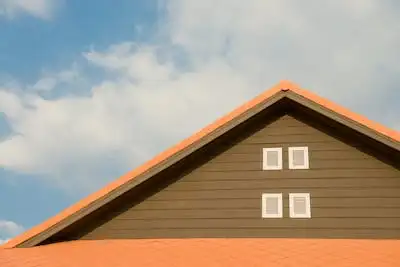Understanding the Enemy: The Science of Ice Dams
Ice dams form when snow melts on your warm roof and then refreezes at the colder eaves, creating a barrier that traps subsequent meltwater. This trapped water backs up under the shingles, potentially causing leaks, rotting wood, and structural damage.
Several factors contribute to ice dam formation:
Warm attic: Poorly insulated or ventilated attics allow heat to escape and warm the underside of the roof, melting snow.
Inadequate ventilation: Blocked soffit vents or lack of ridge vents prevent proper air circulation, trapping heat in the attic.
Steep roof pitch: Steeper roofs encourage rapid snowmelt, increasing the amount of water reaching the eaves before it can freeze.
Heavy snowfall: Abundant snowfall provides more material for ice dam formation.
Defense Strategies: Preventing Ice Dams on Your Roof
Now that we know the enemy, let's strategize our defense:
1.Insulation and Ventilation:
Attic Insulation: Ensure adequate attic insulation (ideally R-38 in Virginia) to minimize heat loss from your living space. Consider adding blown-in insulation for better coverage and air sealing.
Soffit Vents: These vents allow cool air to enter the attic under the eaves, keeping the roof deck cooler and preventing snowmelt. Ensure soffit vents are clear and unobstructed.
Ridge Vents: These vents at the roof's peak allow warm, moist air to escape, promoting attic ventilation and preventing heat buildup.
2.Snow Removal:
Roof Raking: Regularly remove snow from your roof, especially after heavy snowfall. Use a long-handled roof rake to safely pull snow down from the edge, preventing it from accumulating and melting near the eaves.
Heat Cables: Consider installing roof de-icing cables along the eaves and valleys. These cables melt snow and ice, preventing dam formation. However, they require proper installation and can be energy-intensive.
3.Additional Measures:
Ice and Water Barrier: This self-sealing membrane installed under the shingles at the eaves channels water over the shingles instead of allowing it to seep under. Consider installing this during roof replacement or repair.
Heat Reflective Roof Coating: This specialized coating can reflect sunlight and heat, reducing the roof's temperature and slowing snowmelt.
Seal Air Leaks: Seal any gaps or leaks around attic access points, chimneys, and vents to prevent warm air from escaping into the attic.
4.Monitoring and Maintenance:
Regular Inspections: Regularly inspect your roof and attic for signs of ice dams, leaks, or moisture damage. Address any issues promptly to prevent further damage.
Professional Help: If you have concerns about your roof's ability to handle ice dams or require complex repairs, consult a qualified roofing contractor.
Bonus Tips:
Clear gutters and downspouts: Ensure they are free of debris to allow melted snow to flow freely.
Trim tree branches: Overhanging branches can drop snow onto your roof, increasing the risk of ice dams.
Install snow fences: These barriers near the edge of your roof can help prevent snow from reaching the eaves.
Remember: Preventing ice dams is an ongoing effort. By incorporating these strategies into your winter routine, you can protect your home from the damaging effects of ice and enjoy a worry-free winter season.
Beyond the Roof: Protecting Your Home's Interior
While preventing ice dams at the source is crucial, it's also important to be prepared for potential leaks.
Check attic for moisture: Look for signs of water damage, such as mold, mildew, or warped wood.
Monitor ceilings and walls: Be aware of water stains or dampness on interior surfaces.
Place buckets or pans: If a leak occurs, place containers under it to catch water and prevent further damage.
Conclusion:
Ice dams may seem like a formidable foe, but with knowledge and proactive measures, you can keep them at bay and safeguard your home. By making attic insulation and ventilation a priority, regularly removing snow, and implementing additional protective measures, you can weather the winter with confidence, knowing your roof is equipped to handle whatever Mother Nature throws your way. Remember, a little winter preparation goes a long way in preserving your home's comfort and value.

